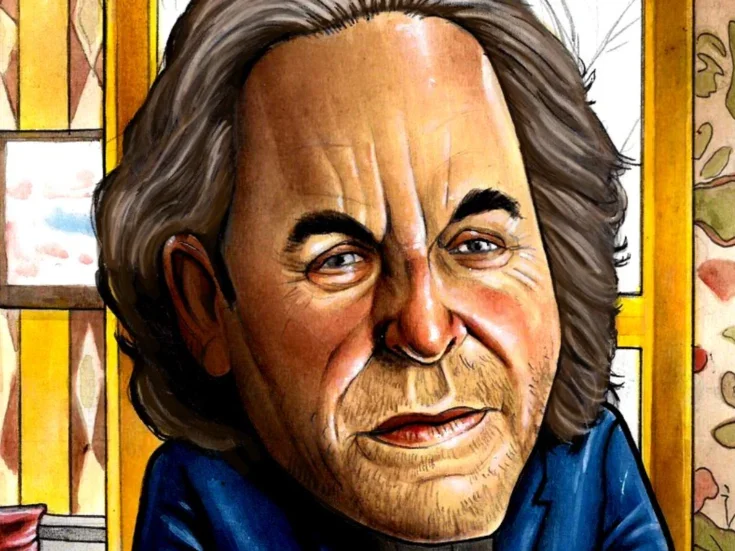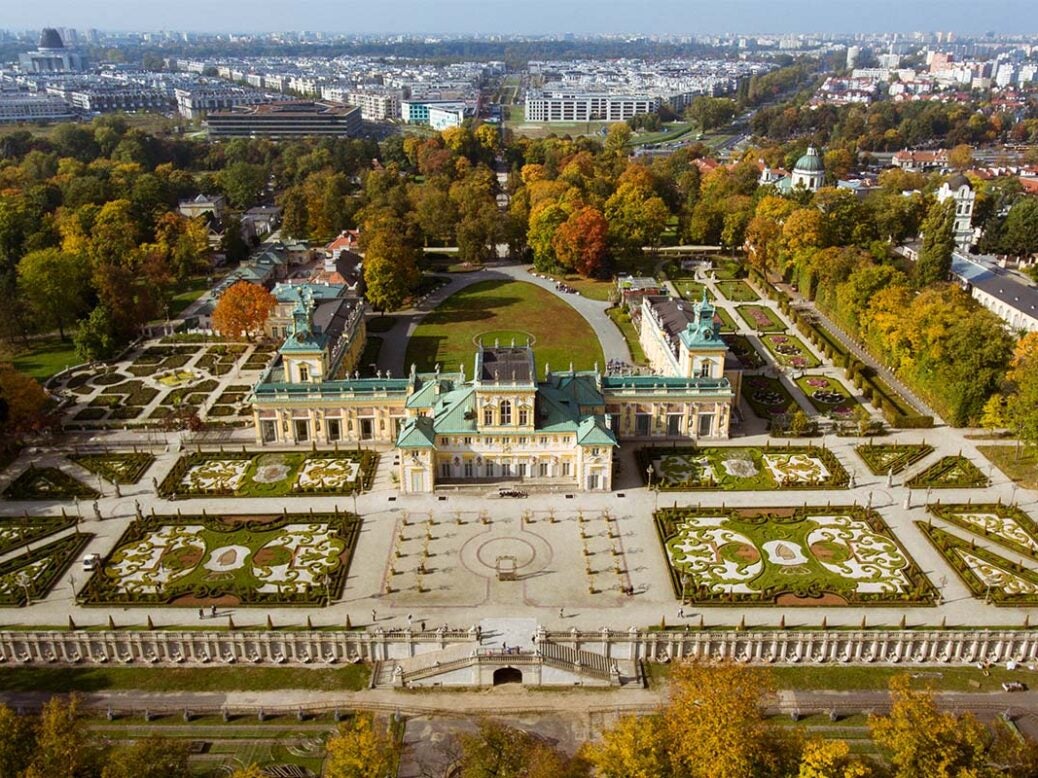
Sprawling grounds, opulent interiors and priceless treasures: the world’s 10 most beautiful palaces are the stuff of fairytales.
Located across Asia and Europe, these breathtaking buildings have been home to some of the world’s most powerful and influential families for hundreds of years. Among them are the current official residences of the King Felipe VI and Queen Letizia of Spain, and Carl XVI Gustaf and Queen Silvia of Sweden.
Also included on this top 10 list are the spectacular Palace of Versailles and the Umaid Bhawan, in India.
Read on for a whistle-stop tour of the world’s most beautiful palaces…
The world’s most beautiful palaces
Umaid Bhawan, Rajasthan, India
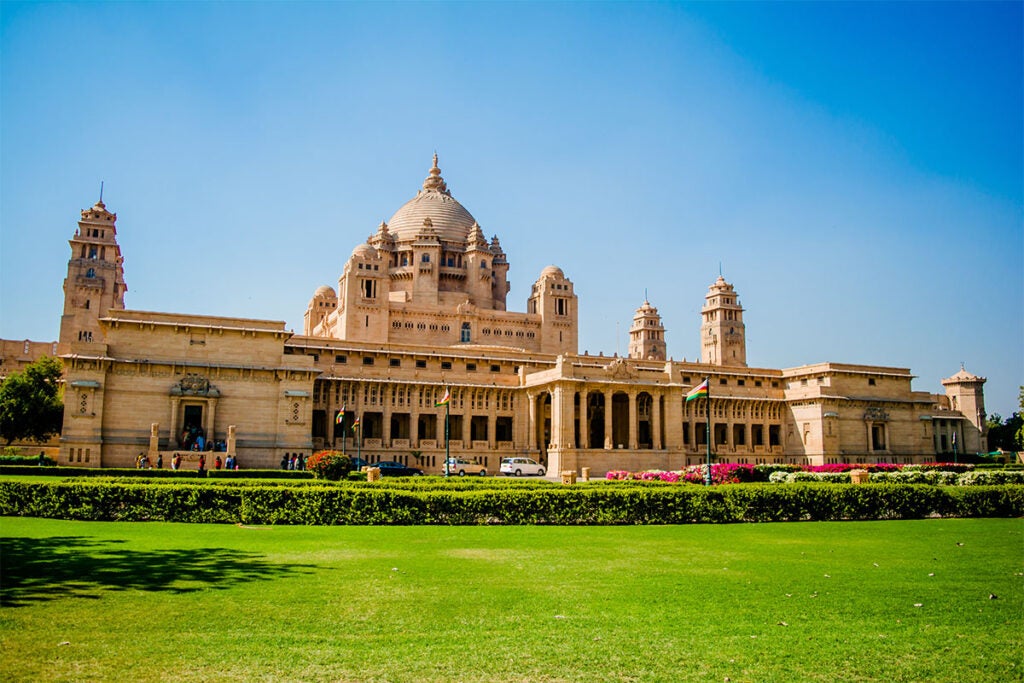
Built under the direction of Maharaja Umaid Singh of Jodhpur, Rajasthan, by British architect Henry Vaughan Lanchester, Umaid Bhawan Palace is the world’s sixth-largest private residence and still the property of the Jodhpur royal family. The sprawling palace was constructed as a means of compassionate employment to farmers of the area seeking refuge from an impending famine. It was completed in 1943, and is an architectural cocktail of Art Deco, Indo-Saracenic features and beaux-arts. Two wings of the palace are made up of golden-yellow sandstone, with interiors fortified by Makrana marble and Burmese teak wood. It’s built with the same palm court marble used in the construction of the Taj Mahal. Part of the palace is now operated as a hotel by Taj Hotels.
Grand Palace, Bangkok, Thailand
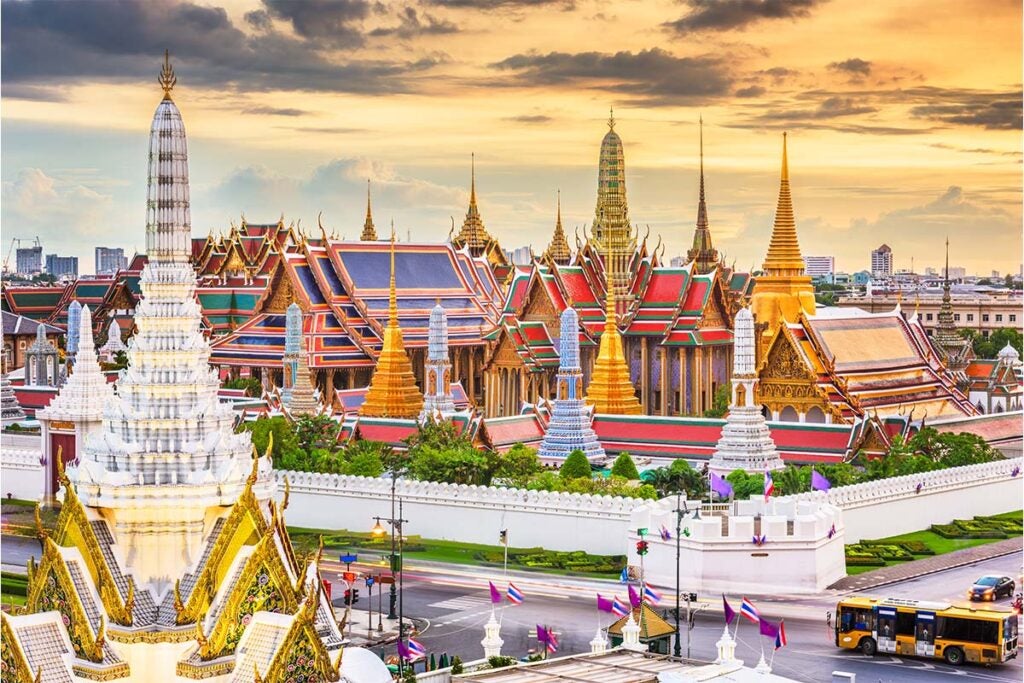
Overlooking the Chao Phraya River, Bangkok’s Grand Palace was built around the 1780s by King Rama I. The palace is considered a sacred site as it houses the Wat Phra Kaew, Temple of the Emerald Buddha, which preserves a single-block jade Buddha—a 26-inch tall palladium of Thailand from the 15th century clothed in garments of pure gold and meditating in a yogic posture. A western style construction in the form of the Borom Philam Mansion was added by King Rama V in the early 20th century. The Grand Palace in Thailand welcomes an average of eight million visitors annually.
Summer Palace, Beijing, China
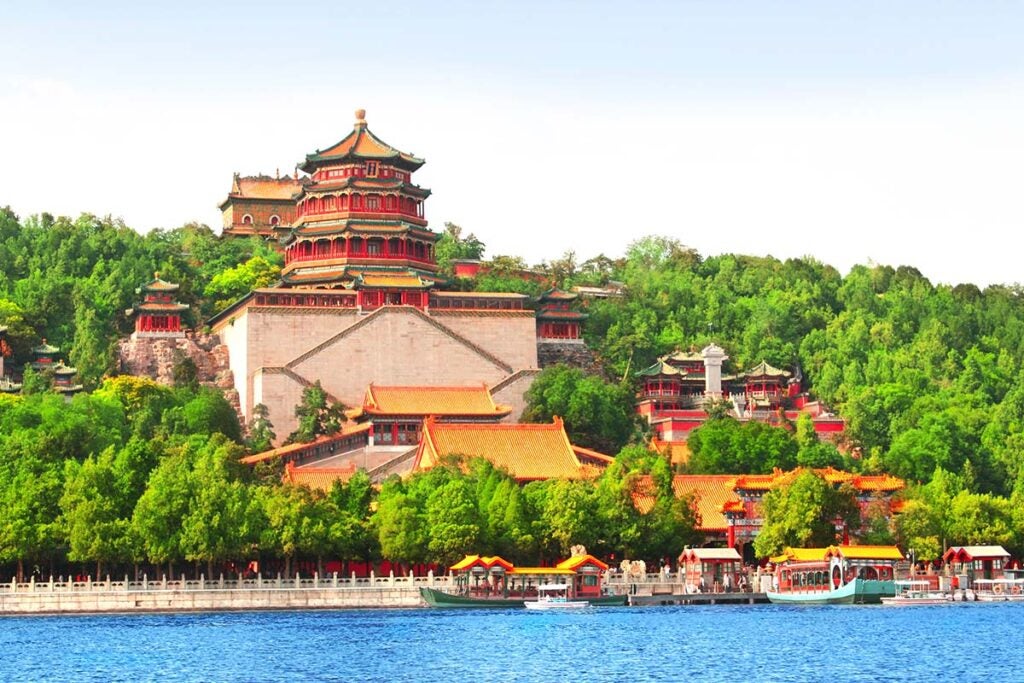
Beijing’s Summer Palace is so much more than its name suggests: it is an impressive complex of palaces, gardens and lakes in the Chinese capital that was once used as a retreat for the ruling family. The first part of construction was commissioned in 1750 by emperor Qianlong of the Qing (Manchu) dynasty as a gift for his mother. It was completed 14 years later. The designers incorporated different architectural and garden styles from across China. The Summer Palace was rebuilt twice by the Empress Dowager Cixi after it was destroyed by European forces in 1860 and 1900. It became a park for the people of Beijing in 1924 and was designated a World Heritage site in 1998. Today it is a popular visitors attraction.
Blenheim Palace, Oxfordshire, UK
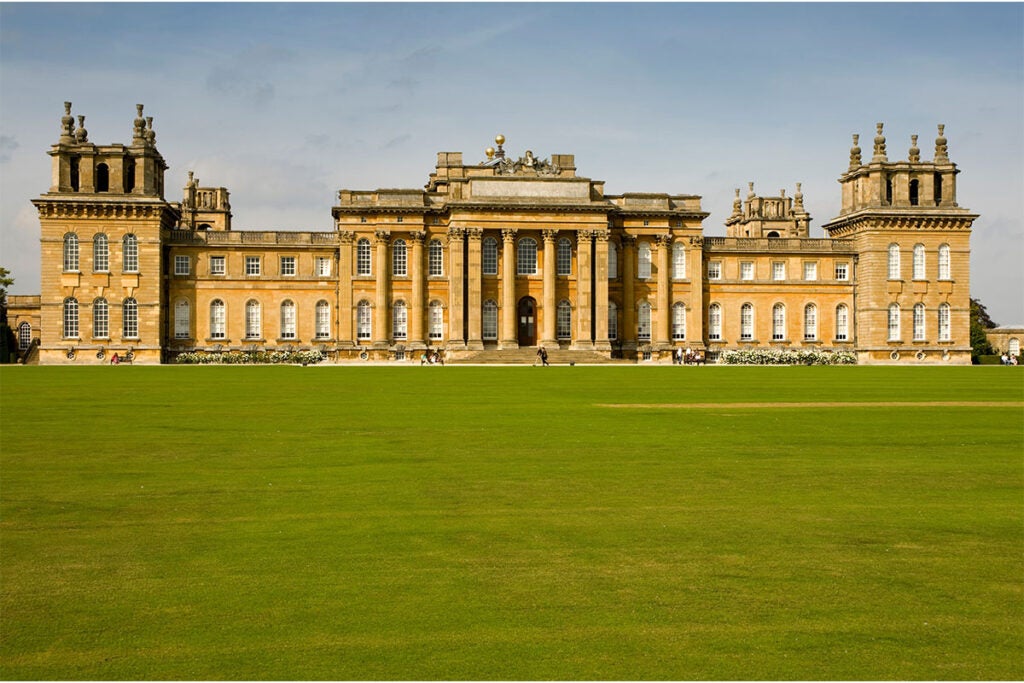
Nestled in the picturesque landscape of Oxfordshire is Blenheim Palace, which holds the distinction of being the only non-royal, non-episcopal residence in England to hold the title of palace. Blenheim is famous as the birthplace of Sir Winston Churchill and the family seat of the Dukes of Marlborough. A masterpiece of Baroque architecture, Blenheim Palace is also a popular tourist attraction, offering tours of the gilded State Rooms and a permanent exhibition on Churchill.
Palace of Versailles, Paris, France
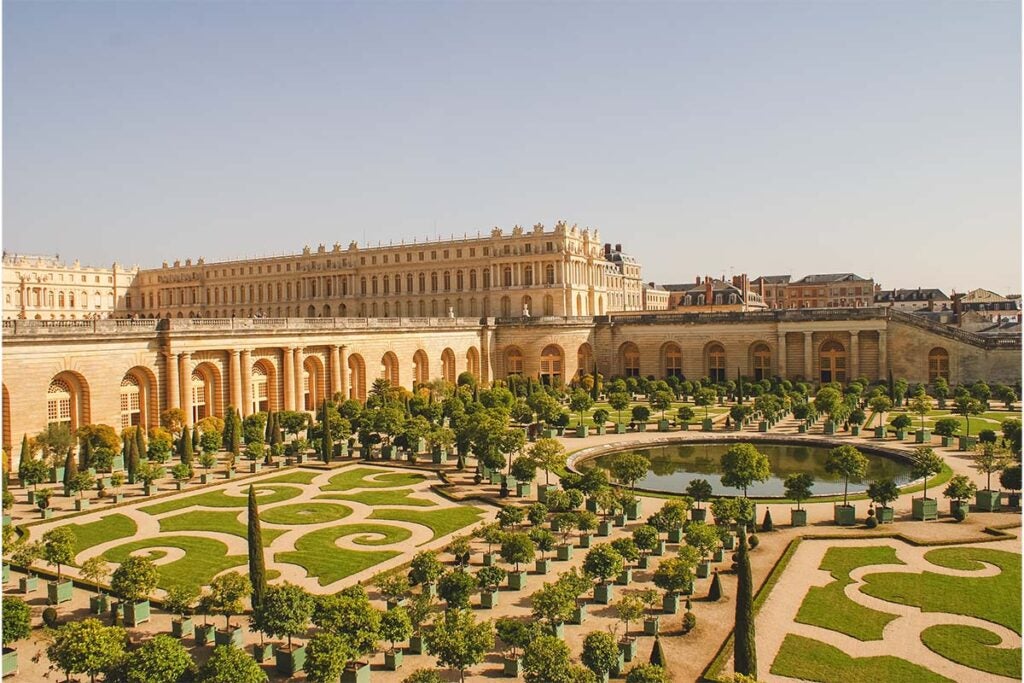
The famous Château de Versailles (Palace of Versailles) in France was first a two-storey hunting lodge built in 1624 by Louis XIII in the Île-de-France region, outside Paris. Subsequently, Louis XIV built a palace on the site and shifted royal proceedings from Paris to Versailles. Despite the palace being stormed during the French Revolution, the decision was made to restore and maintain this one of the world’s best palaces. Attractions housed in the Château de Versailles include the King’s Apartment or Appartement du Roi, the Opéra de Versailles, the Hall of Mirrors, the Hameau de la Reine (a make-believe hamlet with a shepherdess’ cottage built for Marie Antoinette, where she went with her friends to escape from the chaos of royal court life) and Chapels of Versailles. The adjacent garden is equally famous, with a footfall of 8 million annual visitors. The Palace was declared a UNESCO World Heritage site in 1979.
The Royal Palace of Madrid, Spain
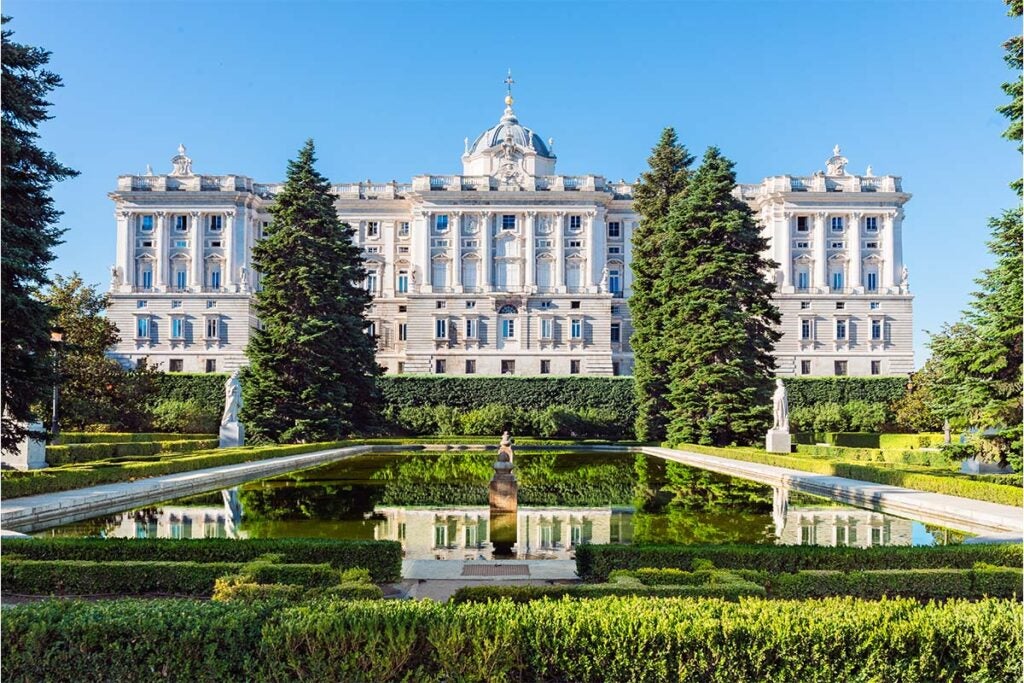
The official home of King Felipe VI, Queen Letizia and their family, the Royal Palace of Madrid is one of the residences on the list that remains in use by a reigning monarch, although today it is only used for ceremonial purposes.
Long before Madrid became the Spanish capital, Emir Mohamed I chose Magerit (the city’s Arabic name) as the site for a fortress to protect Toledo from the advancing Christians. The building was eventually used by the Kings of Castille until finally becoming what would be known as the Antiguo Alcázar (Old Fortress) in the 14th century. It was Charles I and his son Philip II who turned the building into a permanent residence for the Spanish royal family. What was then known as the Palace of Los Austrias burnt to the ground in 1734. It was King Philip V who ordered the construction of the magnificent palace that stands today.
Highlights include the Royal Armoury housing the royal family’s armour and weaponry preserved since the 13th century, and the Painting Gallery with its rarest of rare art in the form of Luis Morales’ Virgin with Child, Caravaggio’s Salome with the Head of John the Baptist and Juan de Flandes’ Portrait of Isabella the Catholic.
Peterhof Palace, Saint Petersburg, Russia
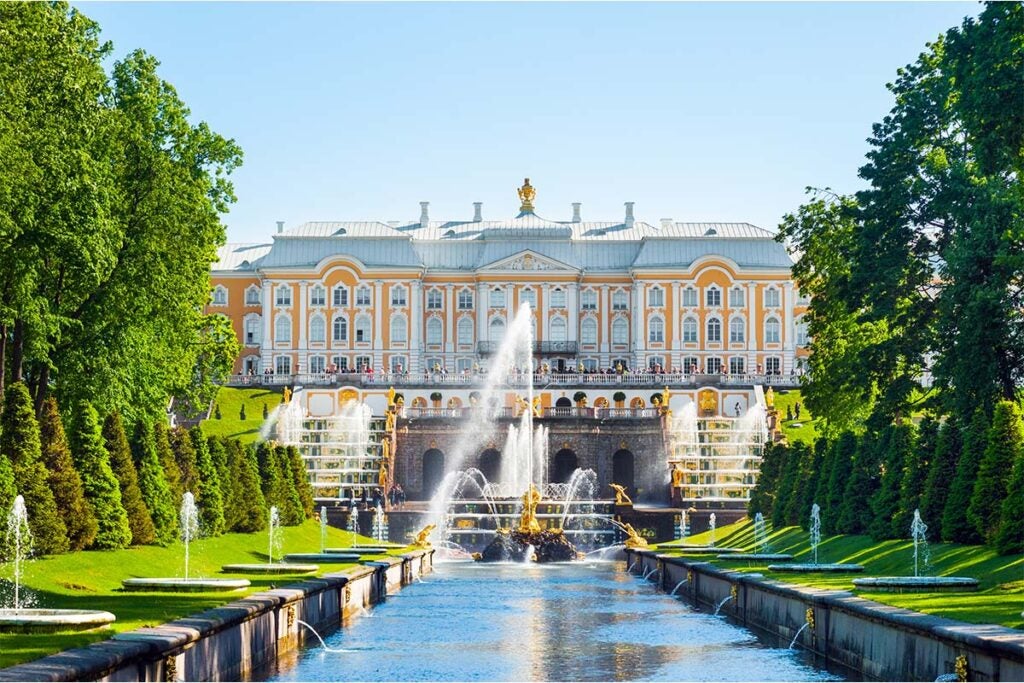
Also known as the ‘Russian Versailles’ or the ‘capital of fountains’, the golden Peterhof Palace is located near Saint Petersburg, Russia, on the southern shore of the Gulf of Finland. Built to compete with France’s Palace of Versailles, this grand palace by the sea is in fact a complex encompassing Monplaisir Palace, Grand Palace and Marly Palace.
Almost destroyed by the occupying German army during World War II, Peterhof was painstakingly restored to resemble its glorious past—a Herculean task that stretched its way into the 21st century. The architecture, which began with Baroque, waltzed its way into neoclassicism during the reign of Peter’s daughter Elizabeth.
Other must-see attractions here are the Grand Palace, the Ceremonial Staircase and the legion of gilded statues welcoming tourists to witness Tzarist opulence, the Grand Cascade (consisting of 64 fountains) that flows into the Samson Fountain and the Lower Gardens. The royal residence was recognised as a UNESCO Heritage Site in 1990.
Schönbrunn Palace, Vienna, Austria
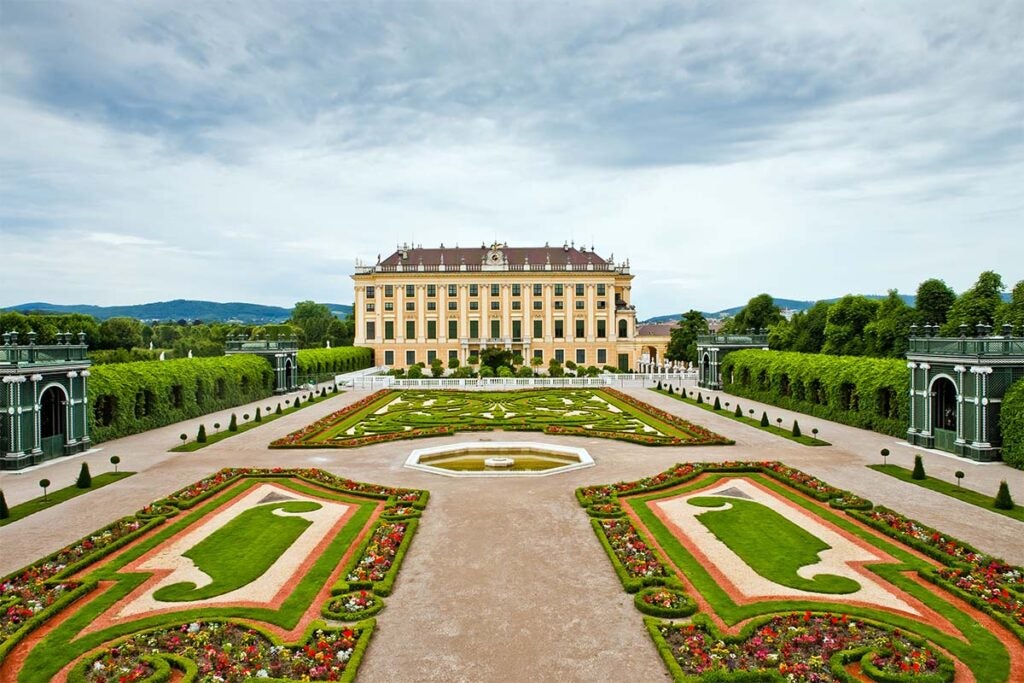
Few European palaces are as opulent as Schönbrunn Palace, Vienna, Austria, which was built as a summer retreat for the country’s ruling Hapsburg family. Constructed between 1696 and 1712 by Emperor Leopold I, the Rococo palace has a jaw-dropping 1,441 rooms. Highlights of this former royal residence include the famous gold and white Mirror Room (with its crystal mirrors), where a six-year-old Mozart came up with his first performance. It is also the site of what is believed to be the world’s first and oldest zoo, which was established in 1752. In addition to the 40 rooms open to the public (including the Gobelin Salon), there is also a labyrinth, a sculpted Privy Garden and the world’s largest orangery.
Sanssouci Palace, Potsdam, Germany
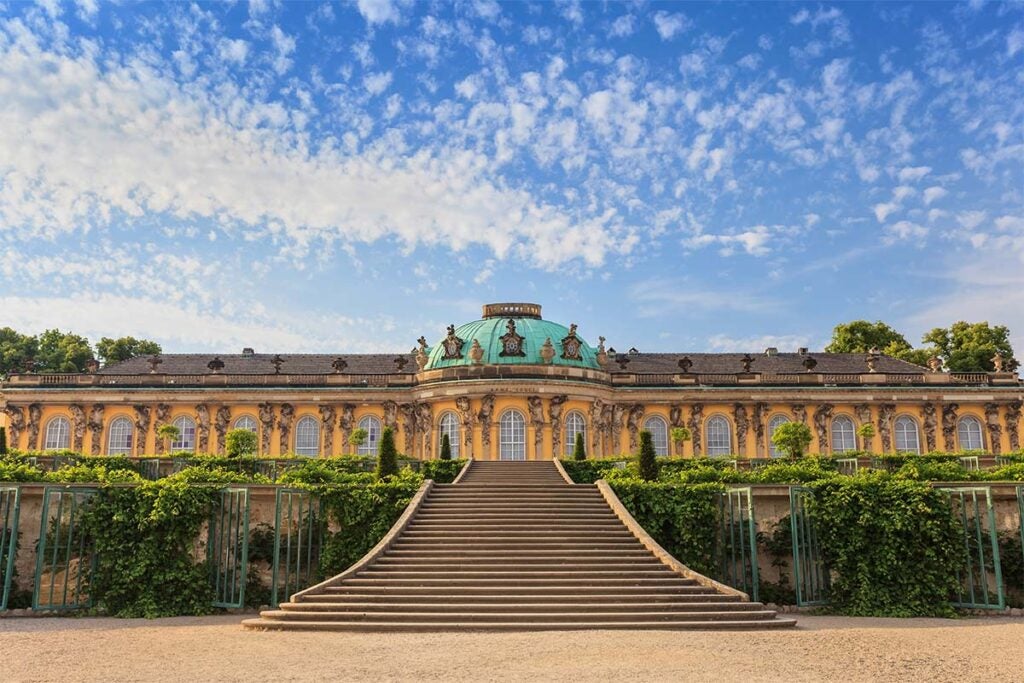
Frederick the Great constructed his beloved summer palace on a small rise covered with vineyard terraces near Potsdam. Its name comes from the French sans souci, or ‘without a care’. Such is the life of restoration and relaxation sought by the 18th-century ruler at the residence, which was build between 1745-1747. The country retreat became a personal sanctuary for Frederick, who enjoyed relaxing in the company of his dogs in the impressive grounds.
Although Frederick believed the palace ‘should only last my lifetime’, fortunately this was not the case. The residence remains one of the world’s most beautiful palaces. Today, Sanssouci Palace is the picture of charm: the intimate suites retain their original designs and furnishings, while the Chinese House, Charlottenhof Palace and Neues Palais wait to be discovered in the grounds.
Other unmissable sights are the Voltaire Room (the French philosopher was a frequent palace guest) and Antoine Watteau’s paintings (one of Friedrich’s favourite artists).
Wilanów Palace, Warsaw, Poland
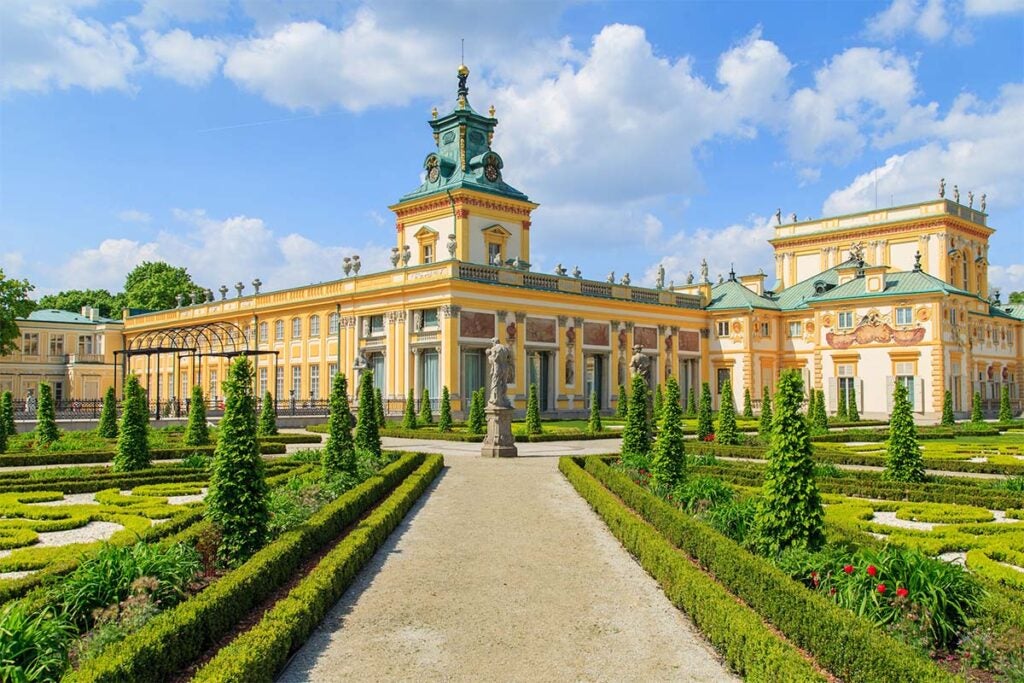
Construction on this beautiful Baroque royal residence started in the summer of 1677. Under the auspices of King John Sobieski III, court architect Augustyn Locci initially conceived a single-storey structure of relatively modest proportions. The residence was completed in 1696.
In 1805, it became the site of one of Poland’s first museums after Stanislaw Kostka Potocki, the son-in-law of Duchess Izabela Lubomirska, inherited the property and vowed to restore it to its former glory. Today it is an architectural feast: a mix of an Italian garden villa, a nobility house and a French palace.
The royal apartments are located on the main floor, while on the first floor hosts the Gallery of Polish Portraits, which showcases the likenesses of Polish monarchs and other eminent figures from Polish history.
The resilient Wilanów Palace, a survivor of Poland’s partitions and both World Wars, is one of Poland’s most important monuments.



